Best Time to Take a Tour to See the Northern Lights from Reykjavik
The Northern Lights are one of Iceland's must-see wonders, but when is the best time to see them in action? Read on to find out when to see them.

Aurora Borealis from Reykjavik | © Visit Greenland
The northern lights can be seen from the highest points in Iceland, and there is a certain time of year when you can see them dance across the sky. At times these lights can be very still, and at other times they can have frantic movements.
The best time to see the Northern Lights in Iceland is in winter, so this is a must-do activity to include among the things to see and do in Reykjavik at that time of year.
When is the best time to visit the Northern Lights?

Definitely the best time of the year to see the Northern Lights in Iceland is the winter season. During this season, the nights are much longer than the day and darkness fills the entire Icelandic landscape, giving way to the most beautiful light shows in the sky.
In summer it is actually impossible to perceive this phenomenon and that is because the nights in summer are short and often non-existent. The brightness prevents the northern lights from being present during the summer nights.
Another necessary feature for seeing the Northern Lights in Iceland is the low light pollution in most parts of Iceland. Especially in the forested areas and on the tops of the island's dormant mountains and volcanoes, it is possible to appreciate this spectacle when the night is dark enough.
As for the weather, to appreciate this spectacle you have to take into account the low temperatures during the winter season, also be aware that during the night, the wind chill can be even lower.
Visiting the Northern Lights in December, January and February
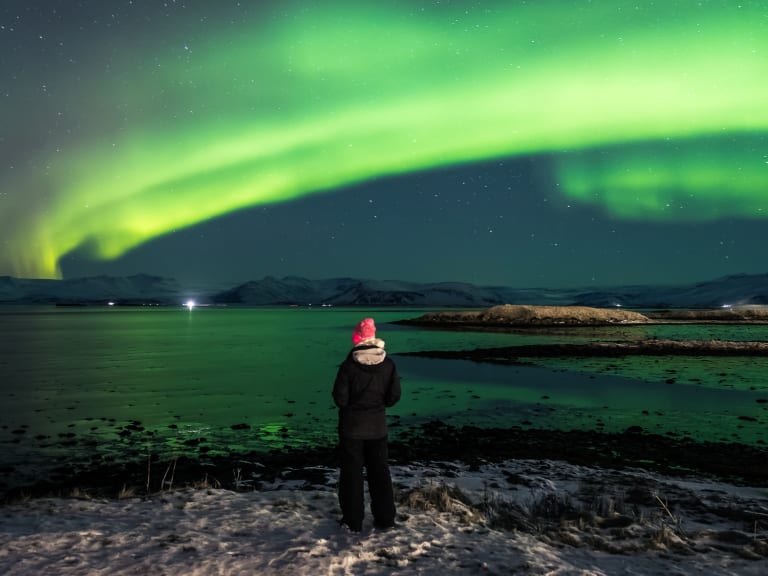
During the months of December, January and February winter is considerably more noticeable. Temperatures start to drop further and the nights become longer and longer, lasting up to 20 hours.
With such long and much darker nights than in other winter months, the Northern Lights become much more visible and noticeable. The disadvantage of seeing this phenomenon at this time is that the weather can be a little hostile compared to other months of the year.
But the truth is that the Northern Lights can be seen throughout the winter months, even during the late winter months when temperatures start to rise and summer begins to arrive in Reykjavik.
December in particular is when winter in Reykjavík is felt most strongly, with daytime temperatures reaching around zero degrees Celsius, and nighttime temperatures of -3 degrees Celsius. Given this reality, it is important to check the Icelandic weather bureau's website to find out if the weather will be good for searching for northern lights.
It is also common during the harsh winter months for wind currents and storms to make it impossible to go out in search of the Northern Lights. To find out if your polar aurora outings will coincide with storms or not, I also recommend you check the weather conditions beforehand.
Although January and February are also part of winter, during these months temperatures can be a bit warmer than in December and daylight stays a bit longer, but they are still good times to go northern lights hunting, especially as storms diminish a bit.
Visit the Northern Lights during September

September is one of the best times to visit Reykjavík and also one of the best times to see the Northern Lights. It's a month when the weather tends to be a little warmer as winter is just approaching, so it's an ideal time to catch the first Northern Lights of the winter in less hostile weather.
On the other hand, in September the low season is just starting to kick in, so one of the best features of this time of year is that the tourist crowds drop off a bit, leaving room for you to get the best places to stay and the best experiences to see the Northern Lights.
This month, which falls in the middle of summer and winter, also gives you the opportunity to see routes that will be closed during the winter, so it's a good time to get to Iceland and do some sightseeing all over the island, not to mention, of course, seeing the Northern Lights.
As for the prices of excursions and tours to see the polar aurora this month, you need to know that you have the opportunity to get good prices because the high season is behind you. It can even be much easier to get the places for a private tour for an affordable price.
Visiting the Northern Lights on clear nights

If there is one rule for seeing the northern lights very well, it is that you need a dark and completely clear night. The clearer the night, the easier it is to see a dancing spectacle in the sky.
The best places to see a polar aurora show are on the highest mountain tops all over the island, however, these locations may change depending on the weather bureau's forecast.
The month that usually offers the most dark, storm-free nights is December, making it one of the most likely months to see the spectacle in the skies. In some of Iceland's forests it is also possible to see the northern lights, provided the night is dark enough.
As autumn approaches in September, you can find nights dark enough to see the northern lights, and the experience can be considerably better because the weather is more pleasant compared to other months of the year.
In October and November the nights are usually clear, although the weather starts to get much more severe as winter approaches. Wind gusts tend to become much more frequent but storms have yet to appear, which is ideal if you want to make your polar viewing trip.
Best time to visit the Northern Lights if you want to save money
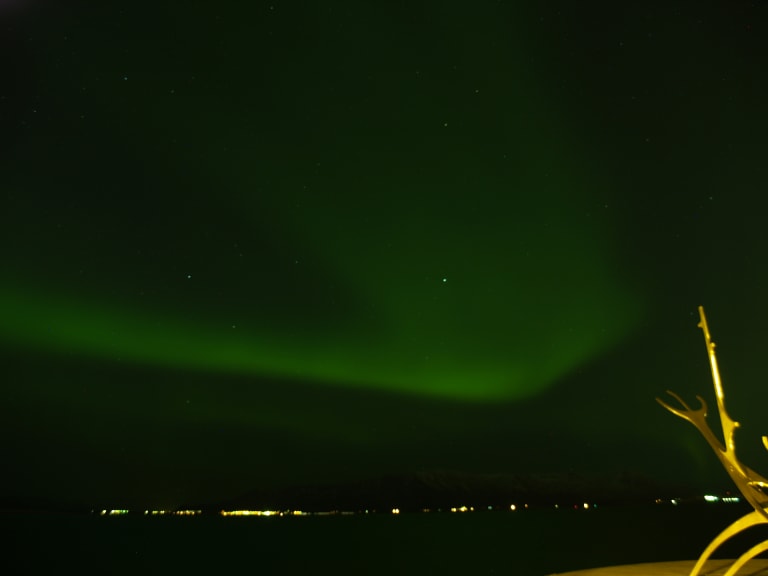
For starters, winter is the low season in Iceland, so everything is cheaper during these months. Also, the influx of tourists tends to drop considerably, making Iceland a good destination to see the Northern Lights.
However, you also have to take into account different characteristics when booking an excursion to see the phenomenon. There are many private tours that can take you to see the Northern Lights, however, if you want to save money, then you should opt for more comprehensive options.
Those tours that offer a fully equipped bus and transfer from the hotel to the northern lights is a good option if you want to save money and only have time to go and see the light show.
Another great option that I highly recommend is to take a combination tour. This means that you will be able to do two activities in one combo. Usually the sighting of this curious phenomenon is accompanied by other activities such as whale watching tours from Reykjavík or the much-loved tous around the Golden Circle.
You can also take a combined aurora borealis and ice cave tour from Reykjavík, which is another popular winter activity. One of the things you need to know about these types of combination tours is that you have the option to do them privately with just your group and still save money, given the combined status.
If you are travelling to Iceland as a family and want to know what to see and do in Reykjavik with children but at the same time save money, I recommend that you ask before making your reservation, the minimum age to participate in the experience and if they offer discounts for children. This could help you to save a lot of money, because then the children can accompany you and you will have to pay less for the children's tickets.
Best time to visit the Northern Lights if you want to see them in low crowds
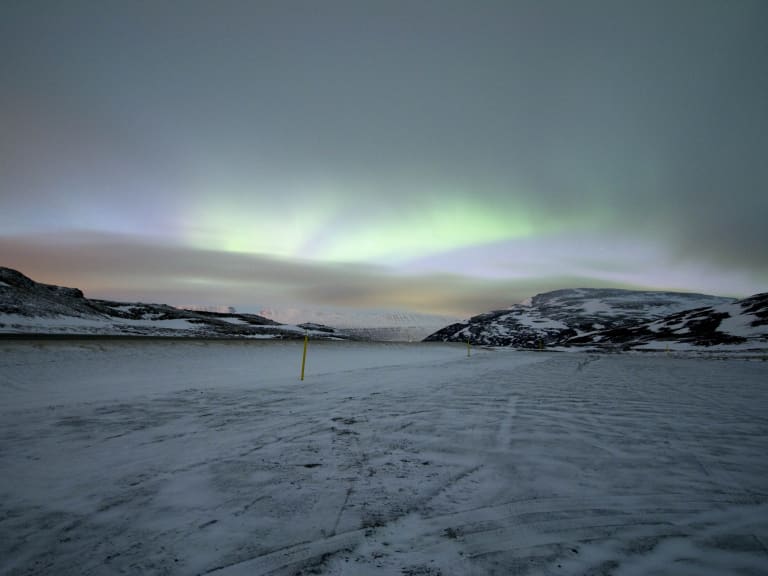
There are plenty of Northern Lights tours available from Reykjavík, and most of these are shared with other people who also want to see the light show. And I'm sorry to say that, as winter is the ideal season to see the Northern Lights, the tours tend to be crowded.
If you want to have a good aurora borealis viewing experience and especially with your group of family or friends, then I recommend that you take a private tour to see this light phenomenon.
Generally on these types of tours and trips from Reykjavík you will attend alone with your group and you will be accompanied by an expert who will tell you everything you need and want to know about the Northern Lights. He or she will also take you to the places where the highest aurora activity is forecast for that night.
Another advantage of this type of tour is that it usually takes place aboard a minivan where you will have all the necessary amenities to have a quiet and comfortable trip.
This is one of the best experiences you can have if you want to see the polar aurora with just a few other people.
Best time to visit the Northern Lights if you want to photograph them
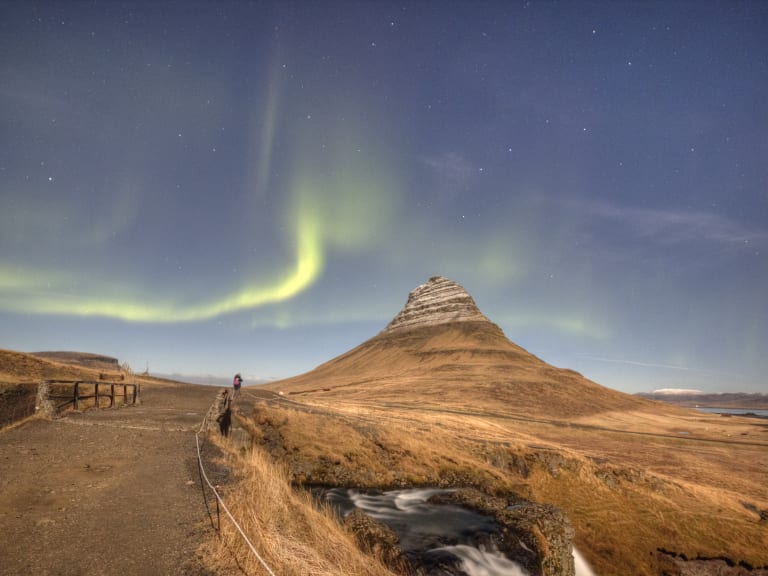
Of course, one of the first things we think of when we want to visit the Northern Lights is that we have the opportunity to capture them best in a photograph. And I have to tell you that to take the perfect photograph of the Northern Lights, several factors have to come together.
One of the factors is when, and in this case you know that one of the best times to see the Northern Lights is during the month of December, when the nights are the longest. You also have to take into account the amount of light that exists in the place where you will take the picture, the less lights present in the scene, the more prominence the aurora will have.
After you are sure that you are fulfilling the first two requirements, you need to comply with the next one, which is the camera settings. To take a good picture of the Northern Lights you should do it with the camera in manual mode and set it according to the movement and illumination of the aurora.
If you are new to photography and only have the camera on your mobile phone, try to investigate the camera modes offered by your phone beforehand to take good pictures that you will be proud of later.
Best time to see the Northern Lights and save time
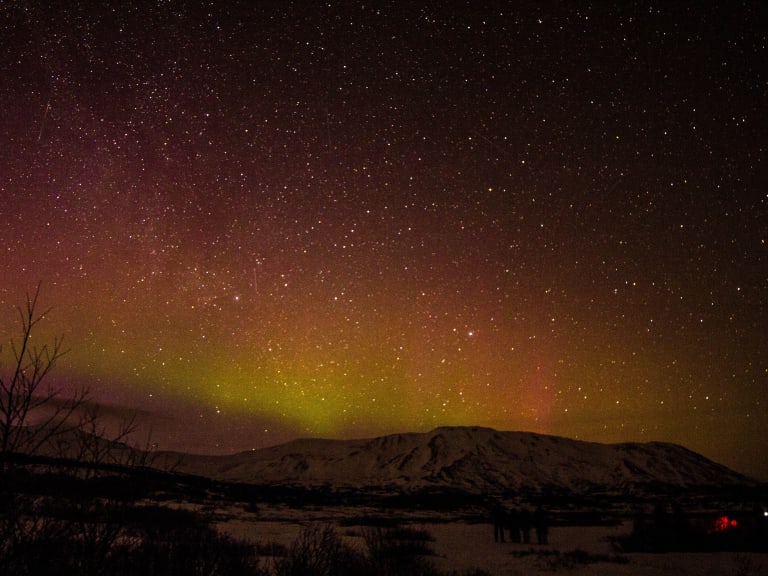
If you are visiting Iceland but are short on time and definitely don't want to leave without seeing the Northern Lights, I have to tell you that to be sure you will be able to enjoy this spectacle you should reserve two nights of your time for it.
Most of these tours allow you to rejoin the experience the next day if no northern lights are sighted during the tour. But in this case, it is again helpful to book a combined experience, allowing you to do two activities on the same day.
Another way to save time on this type of tour is to book private tours, so that the experience is just for you and your group, and the pace of the experience is set by you.
As for the best time and likelihood of sighting this phenomenon, it is necessary that your guide is as knowledgeable as possible to look for this phenomenon in the right places each night.
This is another way to save time, to go with an expert guide on such expeditions. If you go on your own to hunt for northern lights, you will probably have little luck and waste time.
